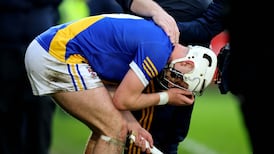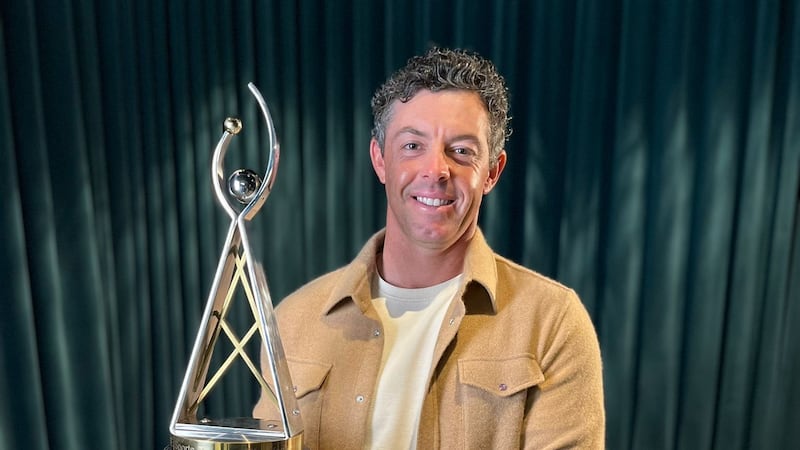Five years ago it started. The slow and in retrospect, remorseless passage to a first All-Ireland since 1973. These things are never predestined no matter how neatly they can be categorised in retrospect but there was a gathering excitement about Limerick in 2018.
They had won at under-age and also lost minor All-Irelands — sometimes framed as the best preparation for senior success; been on breakthrough teams from Árdscoil Rís and most tellingly, given the competition’s status as just one step below senior intercounty, enrolled in the Limerick third-level colleges for Fitzgibbon Cup duty.
Fitzgibbon teams don’t always nourish the county of location but in this instance the influence was too pervasive, as the University of Limerick and Mary Immaculate College of Education dominated the competition, having won the four Fitzgibbon Cups just prior to the 2018 championship.
Limerick IT, now a constituent of Technological University of the Shannon, was another significant presence.
READ MORE
There were detectable staging posts along the way that summer, all of which contributed to the landmark achievement. Whereas you can’t rewrite past events or disappear down the warren of alternative history, there is such an emphasis on a breakthrough win, especially one as long-awaited as Limerick’s.
8
After winning the All-Ireland, manager John Kiely pin-pointed the league finale that spring, also against Galway, as the most significant milestone in the year. It was doubly important in that Limerick had been trying to achieve promotion for the previous seven years.
In 2018, in Salthill in a straight play-off for top spot, they trailed by eight points at half-time, 1-7 to 1-15 before turning it around to win 2-18 to 1-19.
In this newspaper, analysing the All-Ireland final, Nicky English noted: “For me the league win over Galway in Salthill remains a pivotal result for Limerick. They hit 25 wides that day and 20 on Sunday, so they have plenty to work on, but for now they can enjoy a fantastic and well-deserved All-Ireland title.”
Eleven of Limerick’s starting team in Pearse Stadium would line out in the All-Ireland months later. Galway had 10.
14
The new round-robin championship opened with a good win over Tipperary but the championship caught fire in round three on the June bank holiday when Limerick travelled to Cork, not the most successful of venues for the visitors.
The match would qualify as an epiphany because although they were a decent shot to win, the daunting loss of captain Declan Hannon after just seven minutes was compounded by Aaron Gillane’s red card 20 minutes later, which gave them a mountain to climb.
In a really impressive display of improvisation and stepping up to the challenge, the team overcame a two-point half-time deficit to draw the match.
Tom Morrissey deputised on frees and his brother Dan filled in for Hannon while Séamus Flanagan gave a huge display, scoring 0-5 from play. It was a strong championship statement.
15
This is the lowest points total the team has produced in its six-year domination of the game. There had been some re-shuffling for the trip to Ennis to play Clare in the final match of the round robin. In what was probably the worst championship performance of the Kiely era, Limerick lost 0-15 to 0-26 and forfeited a place in the Munster final.
The low-key progress through the preliminary quarter-finals appeared to help to reset the team and spare the players the emotional turbulence of a provincial final. That’s not to say it was planned that way but they made the best of circumstances.
45
The 45-year gap that the All-Ireland bridged had an equally powerful resonance in Thurles that July when Leinster finalists Kilkenny were the opponents in the All-Ireland quarter-final.
It was a match that ebbed and flowed and when Richie Hogan struck for a 66th-minute goal, it had all the hallmarks of a familiar Kilkenny script but Limerick outscored them 0-5 to 0-1 in the time remaining.
The day was also notable for the Na Piarsaigh cavalry, Shane Dowling, Peter Casey and Will O’Donoghue, who would also make a big impact in the final.
They were bridging the first 45-year gap of the summer. Kiely was defiantly delighted.
“History has no bearing on this group of players; they would never be defined by it. They’re going to set their own tone, their own direction and that’s that.”
1
In the All-Ireland semi-final against Cork, Limerick trailed by six in the 62nd minute. The assumption in Croke Park was that they would need a goal to avoid defeat but in a searing sequence of play, they launched a seven-point turnaround that forced Cork to equalise to send the match to extra time.
Before that, nearly halfway through the allocated four minutes of injury time with scores level, Robbie O’Flynn laid off the ball to Séamus Harnedy in front of goal. He stepped in and just as the shot was being primed, Nickie Quaid made an extraordinary intervention, getting his stick in the way and deflecting the ball out of the danger area.
“This to settle it,” Darragh Maloney had said on commentary. In a way, it did.
100
Joe Canning had a free from 100m out in the dying seconds of the All-Ireland final. Limerick’s lead of eight points had been squandered in injury time with the crucial counterbalance of a point in reply by Graeme Mulcahy.
The Galway man’s shot was on target but dropped and ended up in the grateful hand of Tom Condon, whose dash from defence and into history was ended by the final whistle.
Infinity minus 1940
The perennial complaint that Limerick had won one All-Ireland since 1940 was finally laid to rest on August 19th, 2018 — clocking in on that elastic index of misery as two in 78 years. Look at them now.
- email: sean.moran@irishtimes.com
















